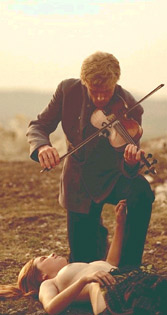 Jancsó’s films are frequently set in obscure moments of the past, such as 1919, suggesting a degree in European history is needed to understand their context. Andrew James Horton argues that Jancsó is really not that interested in the past at all and merely uses it as a backdrop for timeless and mythic struggles.
Jancsó’s films are frequently set in obscure moments of the past, such as 1919, suggesting a degree in European history is needed to understand their context. Andrew James Horton argues that Jancsó is really not that interested in the past at all and merely uses it as a backdrop for timeless and mythic struggles.
Miklós Jancsó is commonly perceived, particularly when considering his films made in the 1960s and 1970s, to be a director who is interested in the power dynamics of revolutions and popular uprisings. This may be so, but it is interesting to note that Jancsó has been conspicuous in avoiding the most obvious choices of subject matter for his films. Although he worked on a Soviet-Hungarian co-production that was supposed to celebrate the 50th anniversary of the October Revolution of 1917, the resulting feature, Csillagosok, katonák (The Red and the White, 1967), was set two years later in the Russian Civil War. He worked with French co-producers but has never made a film about the French Revolution or its aftermath (unlike that fellow central European portrayer of historical oppression, Andrzej Wajda). And despite having an intense interest in Hungarian history, he never shot a direct representation of the 1956 uprising, possibly the deepest scar in the Magyar historical psyche.
Read more at Kinoeye.org




